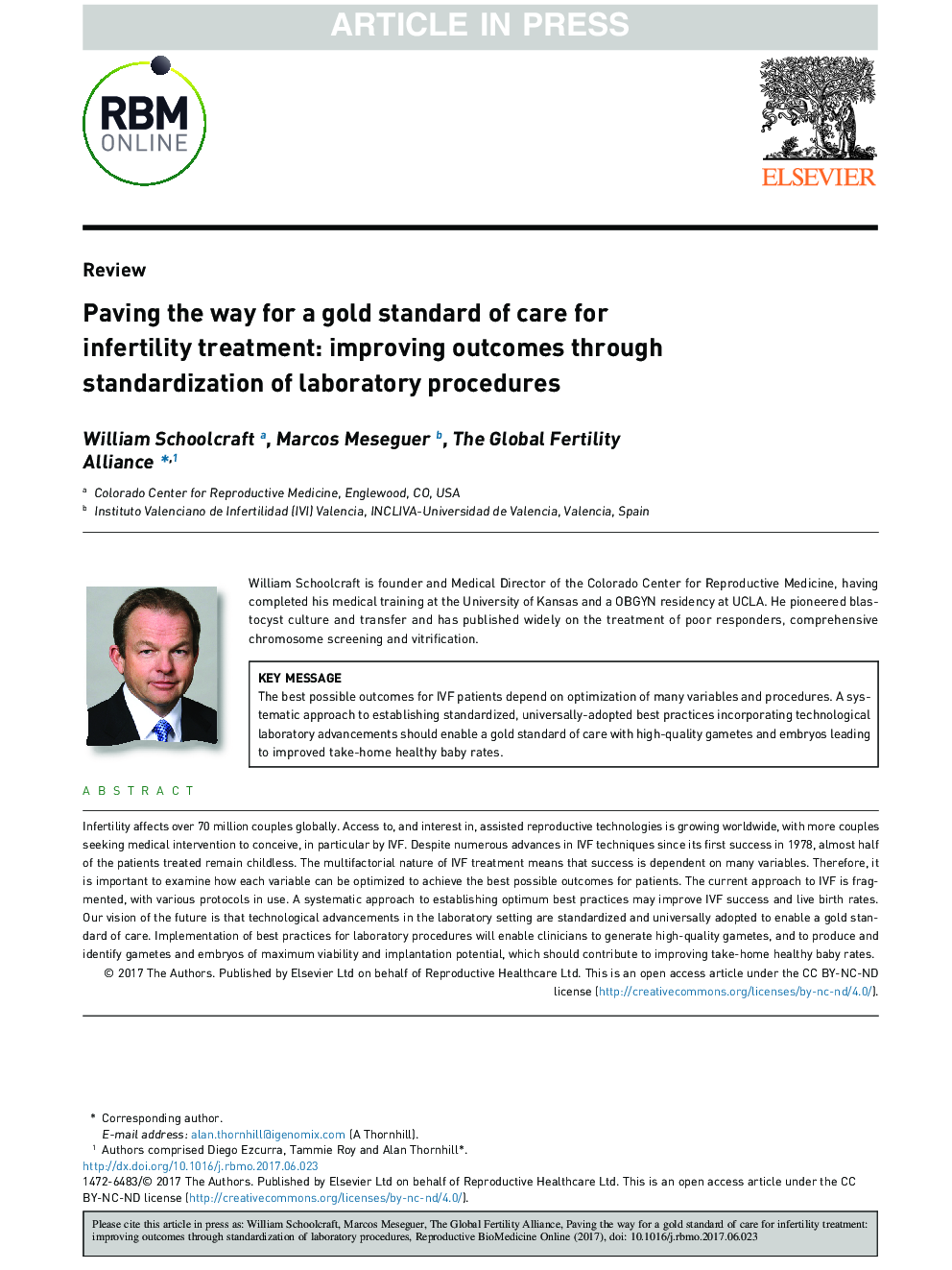| Article ID | Journal | Published Year | Pages | File Type |
|---|---|---|---|---|
| 5696577 | Reproductive BioMedicine Online | 2017 | 9 Pages |
Abstract
Infertility affects over 70 million couples globally. Access to, and interest in, assisted reproductive technologies is growing worldwide, with more couples seeking medical intervention to conceive, in particular by IVF. Despite numerous advances in IVF techniques since its first success in 1978, almost half of the patients treated remain childless. The multifactorial nature of IVF treatment means that success is dependent on many variables. Therefore, it is important to examine how each variable can be optimized to achieve the best possible outcomes for patients. The current approach to IVF is fragmented, with various protocols in use. A systematic approach to establishing optimum best practices may improve IVF success and live birth rates. Our vision of the future is that technological advancements in the laboratory setting are standardized and universally adopted to enable a gold standard of care. Implementation of best practices for laboratory procedures will enable clinicians to generate high-quality gametes, and to produce and identify gametes and embryos of maximum viability and implantation potential, which should contribute to improving take-home healthy baby rates.
Keywords
Related Topics
Health Sciences
Medicine and Dentistry
Obstetrics, Gynecology and Women's Health
Authors
William Schoolcraft, Marcos Meseguer, The Global Fertility Alliance The Global Fertility Alliance,
